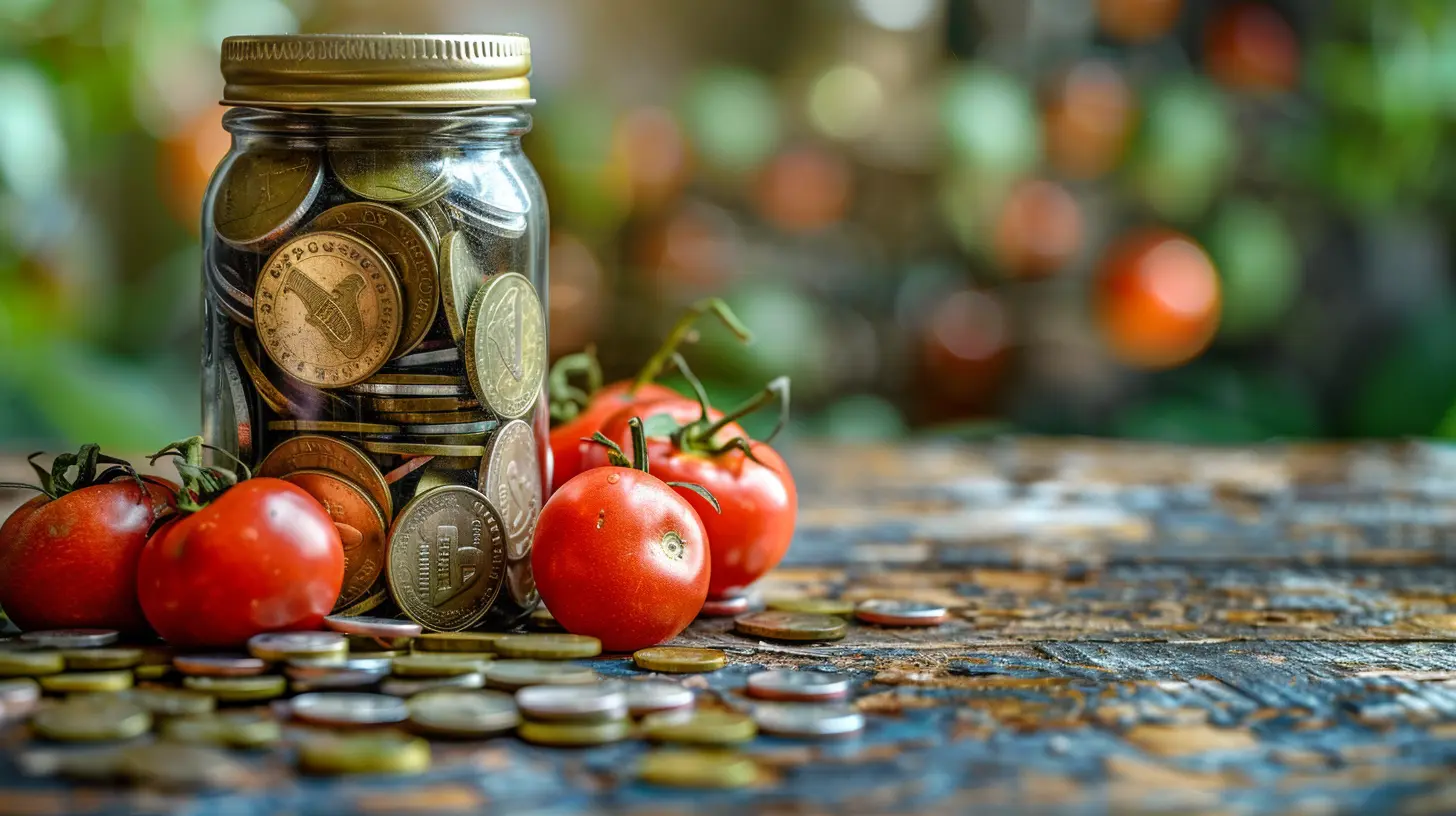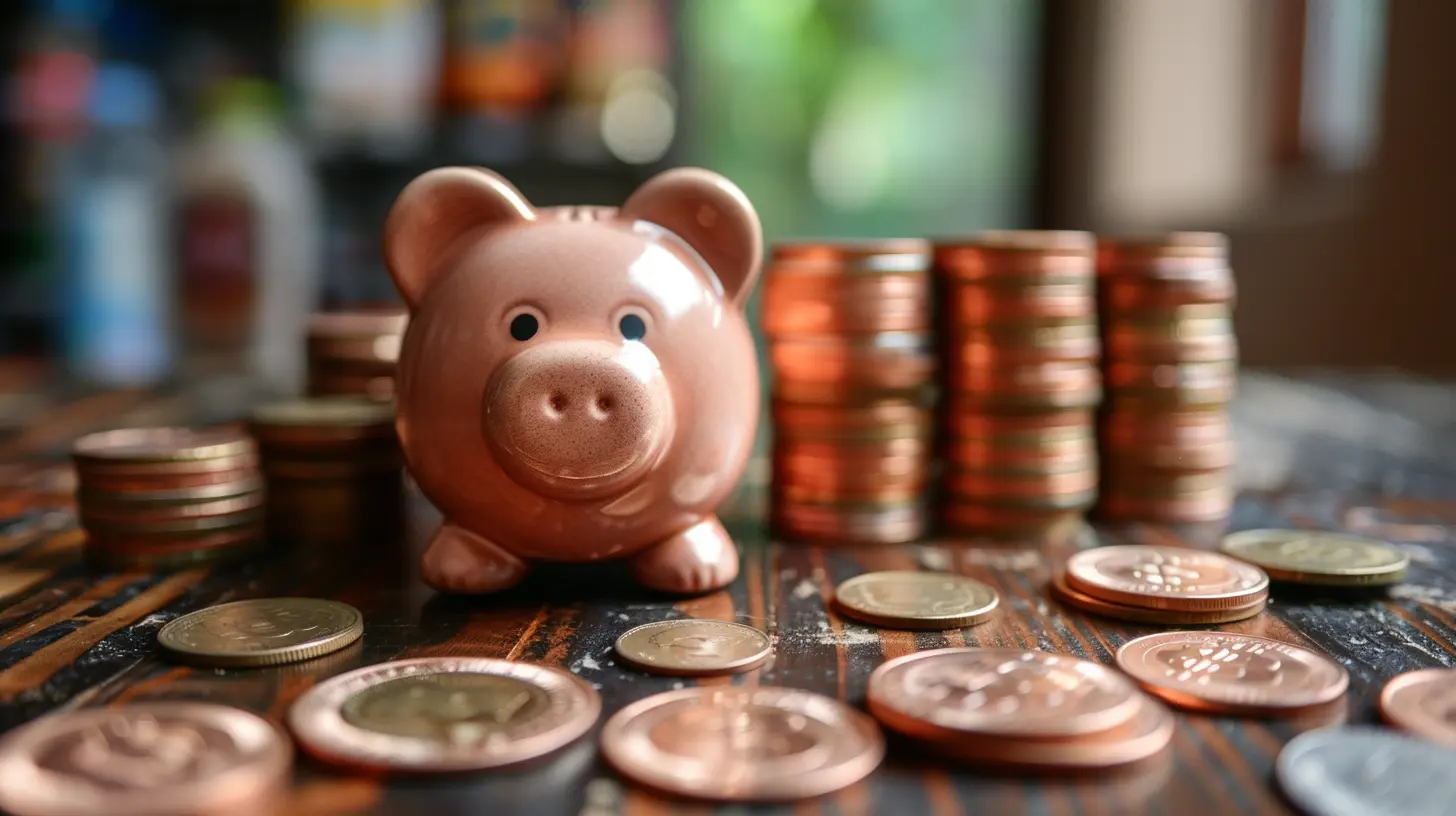Why Overhauling Your Grocery List Can Save You Big Bucks
10 April 2025
When was the last time you took a hard look at your grocery list? If you're like most people, you probably head to the store with a familiar list of items, grab what you always buy, and check out without a second thought. But what if I told you that tweaking that list could save you hundreds—maybe even thousands—of dollars each year?
Yes, you read that right! Grocery spending is one of the most flexible areas in a household budget, and with a few smart changes, you can put more money back in your pocket without feeling deprived. So, let's dive into why revamping your grocery list is a game-changer for your finances.

The Hidden Costs of Your Usual Grocery List
Before we talk about savings, let’s first identify where we might be overspending. Many of us tend to purchase:- Name-brand products: You're often paying extra for packaging and marketing when generic alternatives offer the same quality.
- Pre-packaged and convenience foods: Pre-chopped veggies, frozen meals, and grab-and-go snacks come with a premium price tag.
- Impulse buys: Ever walked in for milk and left with chips, a chocolate bar, and a fancy new drink? Those "small" purchases add up quickly.
- Overly processed and unhealthy foods: Junk food may seem cheap initially, but it often leads to higher health costs down the line.
If any of these sound familiar, don’t worry—you’re not alone. The good news is that with a few mindful adjustments, you can steer clear of these budget traps.

How to Restructure Your Grocery List for Maximum Savings
Now that we know where we overspend, let's talk about how to build a cost-effective and health-conscious grocery list.
1. Plan Your Meals Like a Pro
Meal planning isn’t just for the hyper-organized—it’s a lifesaver for anyone looking to slash their grocery budget. If you head to the store without a plan, you're more likely to buy random items that don’t fit together, leading to food waste.- Start by planning meals for the week based on what’s already in your pantry or fridge.
- Pick recipes that use overlapping ingredients to minimize waste.
- Shop with a list and stick to it—no exceptions!
2. Switch to Store Brands & Generic Products
Most of the time, store-brand products and generic alternatives are just as good as name brands, if not better. They are manufactured in the same facilities, but you're saving money by skipping the flashy packaging and marketing costs. Try switching just a few items, and you might be surprised by how much you save.3. Buy in Bulk (But Smartly!)
Buying in bulk is a double-edged sword. While some bulk purchases make perfect sense—like rice, beans, and pasta—other items, like fresh produce or snack foods, can end up wasted if you don't consume them in time.Stick to shelf-stable, frequently used products when buying in bulk. If your store has a bulk-bin section, take advantage of it—often, you'll pay less because you’re skipping the cost of packaging altogether.
4. Cook from Scratch More Often
Pre-packaged meals and takeout are convenient but pricey. Cooking from scratch is not only cheaper, but it's also healthier. Plus, cooking at home allows you to control portion sizes and ingredients, which means fewer preservatives and unnecessary additives.Start small—maybe swap one or two takeout meals per week with a homemade alternative. Over time, the savings will add up significantly.
5. Shop Seasonally & Locally
Buying produce that’s in season is one of the easiest ways to cut costs. Seasonal fruits and vegetables are more abundant, meaning they’re cheaper and fresher.If you can, check out local farmers' markets—many times, you'll find better deals than at big supermarkets. You can also join a community-supported agriculture (CSA) program to get fresh, local produce at a fraction of the grocery store price.
6. Use Coupons & Cashback Apps
Coupons and cashback apps are like free money—so why not take advantage of them? Apps like Ibotta, Rakuten, and Fetch Rewards offer cashback just for scanning receipts or shopping at participating stores.But a quick word of caution: Don’t use coupons as an excuse to buy items you wouldn’t normally purchase. Stick to your list and use these tools to enhance your savings, not derail your budget.
7. Reduce Food Waste
Wasted food is essentially wasted money. How often have you thrown out wilted lettuce, expired yogurt, or leftovers that sat too long in the fridge?To combat food waste:
- Store food properly to extend its shelf life.
- Keep perishable items visible in your fridge, so they don’t get forgotten.
- Freeze extra portions of meals instead of letting leftovers go uneaten.
8. Shop with a Full Stomach
It might sound silly, but shopping while hungry is a surefire way to overspend. When you're hungry, everything looks good, and you're more likely to grab impulse snacks and unnecessary items. Have a small meal or snack before heading to the store to keep your cravings in check.9. Limit Beverages & Snack Purchases
Soft drinks, juices, fancy coffees, and processed snacks are some of the sneakiest budget-eaters. Water is free, and making coffee at home is far cheaper than grabbing it at a café every day.Instead of store-bought snacks, try making your own popcorn, trail mix, or even granola bars. Not only will you save money, but you'll also end up with healthier alternatives.
10. Try Meatless Meals Once in a While
Meat is one of the most expensive grocery items. Going meatless even just once or twice a week can result in major savings.Try incorporating more beans, lentils, tofu, or eggs into your meals—they’re protein-packed and way more affordable than meat. You don’t have to become a vegetarian, but a few smart swaps can help stretch your budget.

The Long-Term Financial Impact of Smarter Grocery Shopping
These small changes may not seem like much at first, but they add up over time.Let’s do some quick math:
- If you save $20 per week by adjusting your grocery list, that’s $1,040 per year.
- If you save $50 per week, that’s $2,600 a year—enough for a vacation, an emergency fund boost, or a serious debt repayment!
Grocery shopping is something we all have to do, but how we approach it can make all the difference. By being mindful of what we buy, planning ahead, and making smarter choices, we can keep both our wallets and our stomachs happy.
So, next time you're about to hit the store, take a moment to rethink your grocery list—your bank account will thank you!
all images in this post were generated using AI tools
Category:
Money ManagementAuthor:

Harlan Wallace
Discussion
rate this article
7 comments
Katalina McInnes
Great insights! Revamping your grocery list is a smart way to cut costs. Excited to implement these tips and watch my savings grow. Thanks for sharing!
May 8, 2025 at 11:57 AM

Harlan Wallace
Thank you! I'm glad you found the tips helpful. Wishing you great success with your savings!
Marcus McNeely
Great insights! Reevaluating your grocery list not only cuts costs but also encourages healthier eating habits. Small changes can lead to significant savings over time—definitely worth considering!
April 18, 2025 at 7:56 PM

Harlan Wallace
Thank you! I'm glad you found the insights helpful. Small adjustments really can make a big difference!
Amanda Johnson
Transform your grocery list and unlock incredible savings! A mindful approach to shopping not only cuts costs but empowers you to make healthier choices. Small changes can lead to big rewards!
April 15, 2025 at 7:34 PM

Harlan Wallace
Thank you for your insightful comment! I completely agree—being mindful about our grocery choices can significantly enhance both our savings and our health. Small adjustments truly make a big difference!
Zephyrion Frank
Revamping your grocery list can significantly reduce expenses by eliminating unnecessary purchases, leveraging sales, and prioritizing essentials. Small changes lead to substantial savings over time.
April 14, 2025 at 6:45 PM

Harlan Wallace
Absolutely! A strategic grocery list is key to cutting costs and maximizing savings. Small adjustments can lead to big financial benefits!
Zia Bennett
Great tips for budget-friendly grocery shopping!
April 13, 2025 at 4:15 AM

Harlan Wallace
Thank you! I'm glad you found the tips helpful!
Callie McGarvey
Transform your grocery list today—small changes can lead to big savings and financial freedom!
April 12, 2025 at 7:39 PM

Harlan Wallace
Absolutely! Small adjustments to your grocery list can indeed result in significant savings and contribute to your financial goals. Start today!
London Pratt
Revamping your grocery list is a game-changer! By prioritizing essentials, comparing prices, and avoiding impulse buys, you not only cut costs but also make healthier choices. It's a smart and simple way to boost your budget!
April 11, 2025 at 12:26 PM

Harlan Wallace
Absolutely! A well-organized grocery list is key to savings and healthier eating. Thanks for sharing!
MORE POSTS

How to Start Building Credit from Scratch

The Role of Market Manipulation in Speculative Trading

From Penny Stocks to Blue Chips: Choosing the Best for Your Portfolio

Pension Plans for Self-Employed Individuals: What Are Your Options?

Can Filing Jointly or Separately Impact Your Tax Refund?

The Power of Compound Interest in Achieving Financial Independence